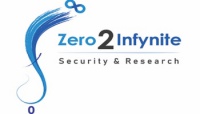No products in the cart.
VISUAL C# .NET
C# is a part of Microsoft .Net framework; it is used for developing rich desktop, mobile application, and web application. Our C# training in Chennai assists students to learn Dot Net programming, and it helps you to develop web applications and desktop applications that can seamlessly interact and work with database.
- Introduction to .Net Framework & OOPS concepts
- C# Programming fundamentals
- Conditional and Iteration statements
- Classes & objects : Introduction to classes – object creation – Methods – Constructors – Garbage Collection – Destructor – This keyword
- Inheritance and Polymorphism in C# : Method Overriding and Method Hiding
- Arrays : Single dimensional arrays – Rectangular arrays – Jagged arrays
- Enumerations
- Overloading and overriding operators
- Structs and Namespace : Inheritance – Abstract classes and Interface – Nested classes – structs – Namespace
- Properties and Indexes
- Delegates and Events : Declaration and Instantiation
- Creating Window based application : creating and using Main menu, Dialog boxes, toolbars, Status bars, combo boxes
- File System and Streams
- Exception handling
ASP .NET
Asp.net is used to develop web application, web services and dynamic websites. Web application development on this platform is more secure and you need license to use it. Take a look at our asp.net training in Chennai course syllabus.
- Web Forms And Control: Web control Class – Creating Web Form Application – Handling images – Navigation between pages – Managing Server Controls – Server control events – HTML and Data Controls – Validation Control.
- Introduction to ASP .Net : ASP .Net and its use – Internet Information Server – Namespaces – .Net Framework Classes.
- Master Pages & Themes: Simple Master Page – Nested Master Page – Configuring Master Page – Creating and Applying Themes – Applying style sheet.
- Web Services: XML Web Services – Creating Web services & Setting Web Service Attribute – Execution of Web service created – Web Service in Client and Server end.
- Uploading Files: Using File Upload Control – Setting the location and file name – Uploading the file – Defining the type and size of file
- Security membership and roles: Authentication – Authorization – Impersonation – Code Access security.
- Deployment: Deploying Web application – Deploying Windows application – Deploying website – Publishing website.
ADO .NET
Overview of ADO .NET – Connection and Command Object – Data Readers – Data sets & Adapters – Connecting to Database using Data Adaptor – Data Binding, Filtering and Sorting.
